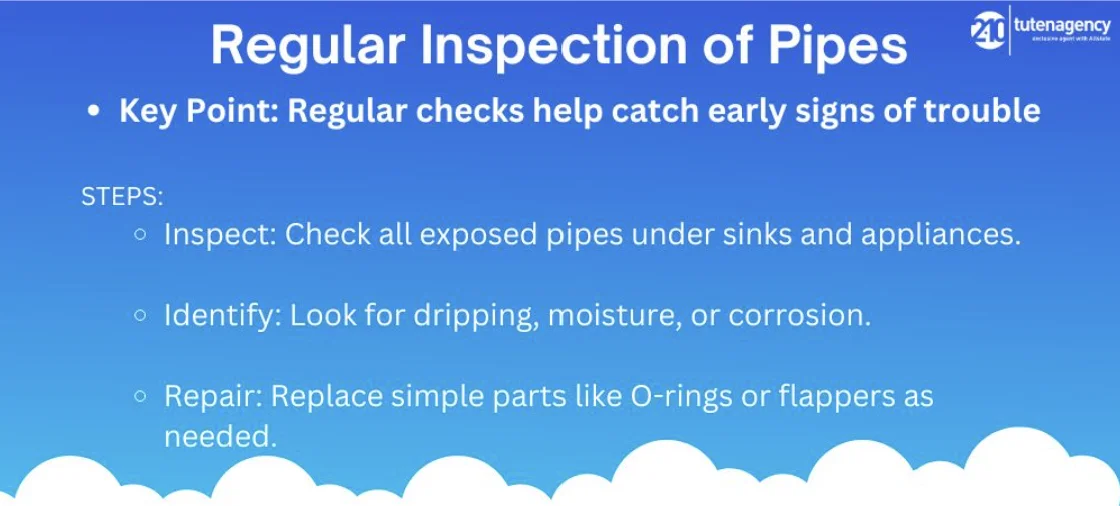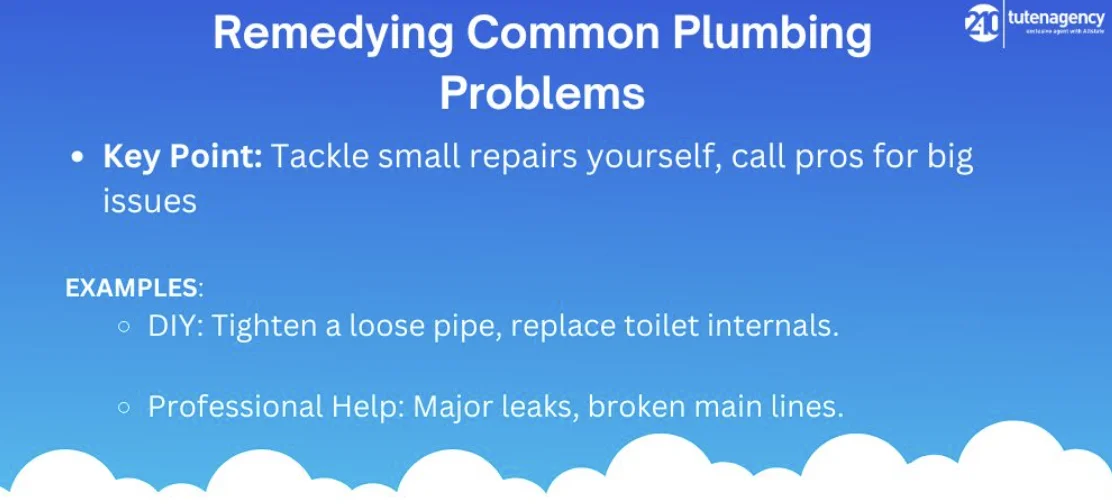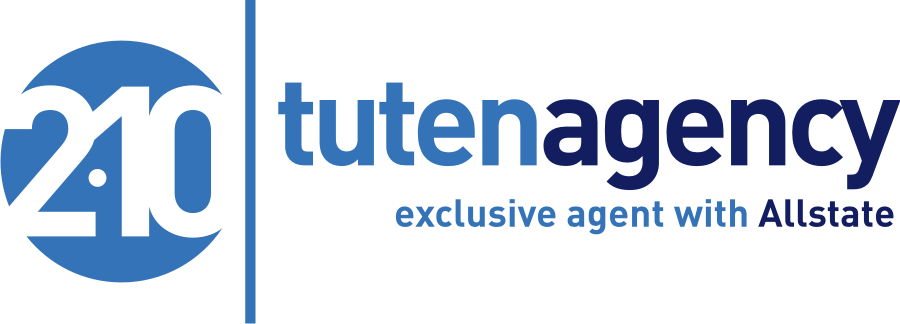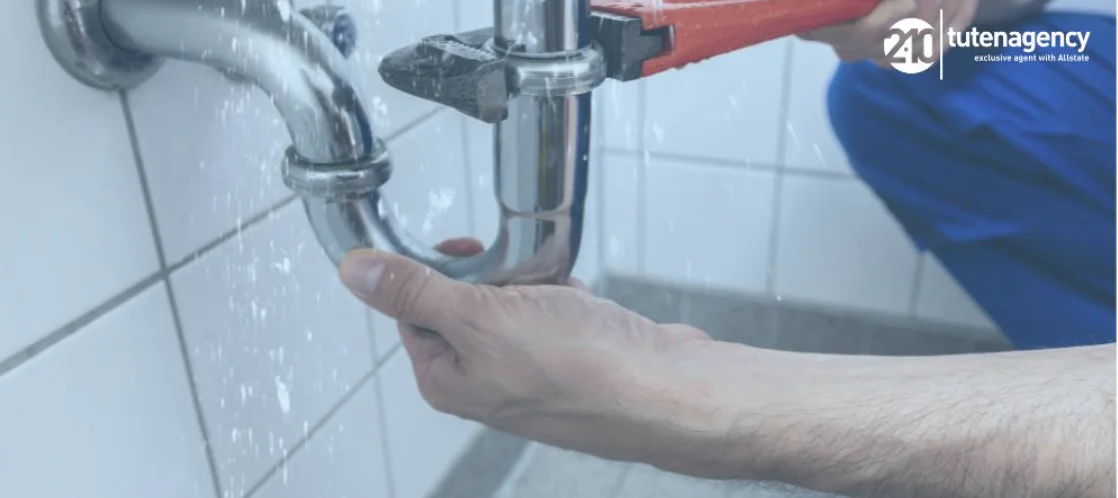Home plumbing problems extend beyond mere annoyance; if left unchecked, they can result in considerable water loss and potential structural damage. Issues like leaky faucets, clogged drains, and corroded pipes do more than irritate—they can also lead to significantly higher water bills. Fortunately, many of these issues can be proactively addressed with simple do-it-yourself (DIY) maintenance. This article outlines easy steps for regular inspections and tackling small problems, which help protect your home from potential plumbing catastrophes.
Regular Inspection of Pipes
Regularly checking your home’s pipes is crucial in preventing plumbing issues. Start by examining all exposed pipes in your home, including those under sinks and connected to appliances like dishwashers and washing machines. Look for any signs of dripping, moisture, or corrosion. If you find a leaking fixture, it might need a new part, such as an O-ring for a leaking faucet or a flapper for a running toilet. These components are typically affordable and straightforward to install, and taking care of these issues early can prevent more serious problems.

Detecting Hidden Leaks
Not all leaks make their presence obvious. Sometimes, the only signs might be a stain on a wall, a musty smell, or discolored water. Pay attention to these subtle indicators. A dark spot under a cabinet or a warped floor can suggest a hidden leak. Disregarding these signs can result in more severe damage, so it’s important to investigate and address them immediately. If you need help fixing the issue, consider consulting a professional before the damage becomes more extensive.
Proper Drainage Practices
Your drains play a vital role in your home’s plumbing system. Be mindful of what you dispose of down the sink to keep them running smoothly. Avoid letting fats and oils enter the drain, as they can solidify and cause clogs. Instead, dispose of grease in the trash. Similarly, things like cotton balls, paper towels, and other non-degradable materials should never be flushed down toilets as they can cause severe blockages; rather than resorting to harsh chemical drain cleaners that can harm your pipes over time, opt for using a drain snake or seek the help of a professional to clear stubborn clogs safely.
Focus on Faulty Plumbing Components
Check for faulty components in your plumbing system, particularly where there might be corrosion. Corrosion often occurs at joints with different metals, such as copper and galvanized steel. If you notice any corrosion, it’s important to address it quickly. Small repairs, like replacing an old washer or securing a loose connection, can often be managed independently. However, if the pipes are severely corroded, it may be essential to replace them to prevent leaks and water damage.
Using the Water Meter to Detect Leaks
One effective way to check for leaks is to monitor your water meter. First, ensure no water is being used inside or outside your home. Check the meter’s current reading, wait 30 minutes, and check again. If the meter has changed, there’s likely a leak somewhere. This method can help you catch even small leaks that can go unnoticed for months, saving you from potential high water bills and extensive water damage.
Remedying Common Plumbing Problems
Many small plumbing problems can be resolved with just a few tools and basic knowledge. For instance, replacing the internals of a leaky toilet or tightening a loose pipe under the sink are tasks well within the reach of most homeowners. However, if you encounter water damage to floors or walls or a complex issue like a broken main line, it’s wise to call a professional plumber. They can handle major repairs and ensure the job is done right, preventing future issues.

Conclusion
Regular plumbing maintenance is crucial for ensuring your home’s system operates efficiently and helps you avoid expensive repairs. By performing regular inspections and quickly resolving minor issues, you can avert many typical plumbing problems. Remember that while numerous plumbing tasks are manageable through DIY efforts, you should quickly reach out to a professional for more complex issues beyond your skill level.
FAQs
What are some signs that my water pressure might be too high and damaging my plumbing?
Signs of excessively high water pressure include constantly leaking faucets, banging pipes, and appliances like dishwashers and washing machines failing prematurely. A water pressure gauge can help you measure and adjust your pressure if necessary.
How can I tell if my toilet is leaking internally?
A simple test involves placing a few drops of food coloring in the toilet tank. If, without flushing, the color appears in the bowl after 30 minutes, you likely have a leak that needs fixing.
How do I maintain outdoor plumbing in winter?
Insulate exposed pipes, drain and shut off outdoor faucets, and ensure your home’s heating system is set to at least 55 degrees Fahrenheit to prevent pipes from freezing and bursting.
What is the best way to clean aerators on faucets?
Remove the aerator carefully using pliers, rinse it under water, and use a small brush (like an old toothbrush) to remove any sediment or lime buildup before reinstalling it.
Get the right coverage for your home with tutenagency
New tutenagency customers?
Quote homeowners insurance online or call (334) 502-5111 to insure your home.
Legal Disclaimer: ADVERTISING MATERIAL ONLY. Do not rely on this site or this article for legal or financial advice. The information provided on 210agency.com is strictly for educational purposes and to provide you with general educational information. Since state laws and financial regulations are subject to change, please schedule an appointment with an attorney or qualified financial advisor in your area to further discuss your personal situation. This public information is neither intended to, nor will it, create an attorney-client or financial representative relationship.

